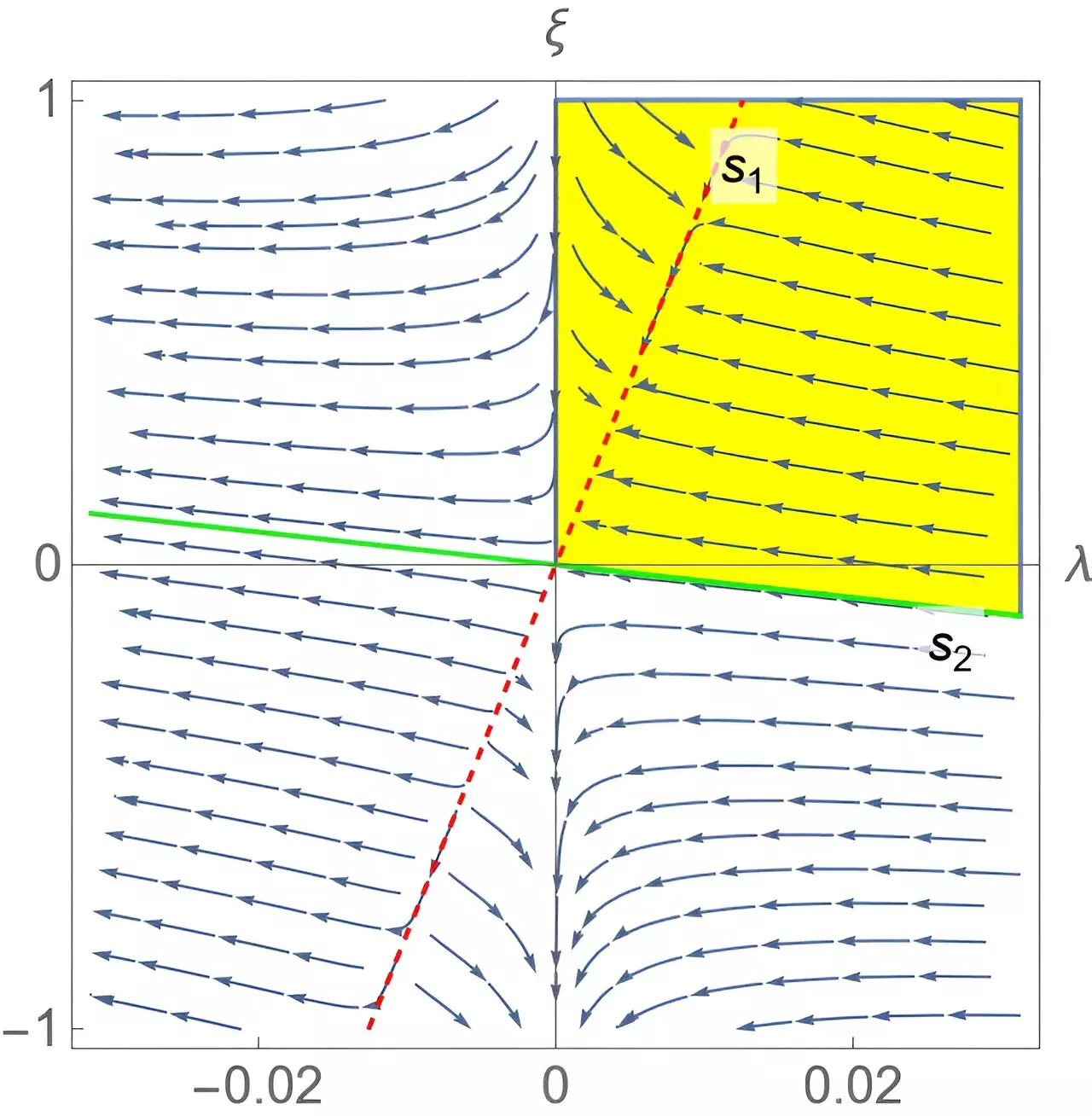In a groundbreaking study published in *Physical Review Letters*, a collaborative team from the International School for Advanced Studies in Trieste, the University of Massachusetts, and the Instituto de Física Teórica at Universidade Estadual Paulista in Brazil has ventured into uncharted territories of theoretical physics. They have unveiled an innovative framework to derive the physical beta functions of couplings within the realm of quadratic gravity. This new research not only enhances understanding of gravitational phenomena but may also play a pivotal role in bridging some gaps found in classical and quantum gravity theories.
At its core, quadratic gravity expands upon Einstein’s seminal general theory of relativity by integrating local terms that are quadratic in curvature into the Einstein-Hilbert action. This theoretical construct is not merely a mathematical curiosity; it could provide meaningful insights into various gravitational events ranging from black hole dynamics to the cosmic expansion of the universe, ultimately presenting a more cohesive explanation of the gravitational forces at play.
Redefining the Beta Function’s Role
The beta function serves as a critical element in quantum field theories (QFT), typically guiding the behavior of coupling constants as systems evolve across different energy scales. According to John Donoghue, a co-author of the study, understanding this beta function is essential for illuminating the high-energy behavior of such theories. “As the beta function usually gives us the flow of a quantum field theory from one scale to another, it might also provide us with additional hints on the high-energy behavior of the theory,” said Gabriel Menezes, another research team member.
What sets this research apart is the rigorous approach to understanding how the beta function varies in the context of quadratic gravity, and how this variation can lead to profound implications for the field of quantum gravity. While many traditional techniques for analyzing these functions tend to converge on similar results, the mortality of such convergence is found wanting in quadratic gravity.
New Techniques Shaping Quantum Field Theories
As the research team tackled the complexities of running coupling constants, they developed novel techniques to identify the behavioral patterns of physical amplitudes in quadratic gravity. In traditional settings, coupling constants generally “run,” or evolve, depending on the energy scale involved. However, the established methods for calculating such “running” have produced inconsistent results within quadratic gravity frameworks.
Through rigorous analytical approaches, Donoghue and his collaborators unveiled new beta functions specific to their study. Their work indicates that coupling constants could attain very small values at high energies, suggesting a phenomenon known as asymptotic freedom, a highly desirable trait in quantum field theory. This capability for couplings to run to exceedingly low values holds the key to avoiding destabilizing particle classes like tachyons, which could jeopardize theoretical integrity.
Implications for Our Understanding of Quantum Gravity
The ramifications of these findings extend far beyond mere theoretical abstraction. The researchers’ insights potentially chart a new course for quantum gravity studies. “While quadratic gravity carries its quirks that remain poorly understood, it blends seamlessly into the broader fabric of quantum field theories of gravity, inviting further exploration and development,” Donoghue emphasizes.
Moreover, the team’s investigations could significantly affect various gravitational phenomena and other theories by supplying tools that enhance predictive capabilities in scenarios previously given little clarity. The prospect of attaining a deeper understanding of scattering amplitudes and cross-sections within quadratic gravity is particularly tantalizing. Such advancements would not only push the boundaries of theoretical physics but could also present real-world implications for technologies and theories that rely on gravitational dynamics.
Charting a Path Toward Future Discoveries
By bringing forth innovative methodologies for exploring the complexity of quadratic gravity, researchers like Donoghue and Menezes embolden the field’s landscape. Their strategies speed us toward a more robust framework and a clearer understanding of how gravity functions at both quantum and cosmic levels.
In summation, the implications brought forth by this research take us one step closer to demystifying the intricacies of gravity in the quantum realm. They could serve as stepping stones for unearthing more profound truths hidden in the universe’s fabric, catering to a generation of physicists eager to answer questions that have lingered for decades. The potential for quadratic gravity as a coherent quantum field theory of gravity is not just a theoretical proposition; it is an emerging reality, driven by curiosity and dedicated scientific inquiry.


Leave a Reply